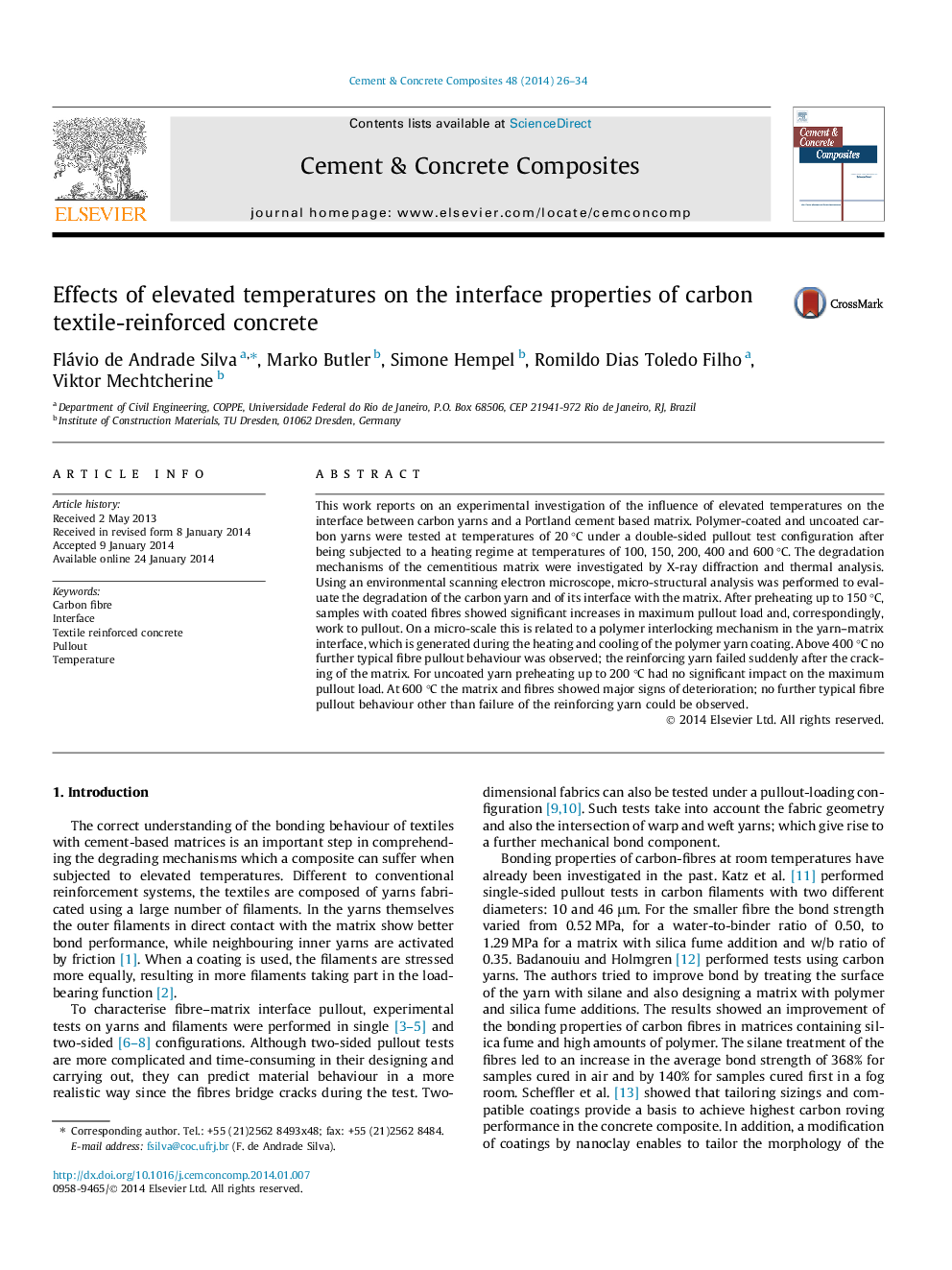| Article ID | Journal | Published Year | Pages | File Type |
|---|---|---|---|---|
| 1454744 | Cement and Concrete Composites | 2014 | 9 Pages |
This work reports on an experimental investigation of the influence of elevated temperatures on the interface between carbon yarns and a Portland cement based matrix. Polymer-coated and uncoated carbon yarns were tested at temperatures of 20 °C under a double-sided pullout test configuration after being subjected to a heating regime at temperatures of 100, 150, 200, 400 and 600 °C. The degradation mechanisms of the cementitious matrix were investigated by X-ray diffraction and thermal analysis. Using an environmental scanning electron microscope, micro-structural analysis was performed to evaluate the degradation of the carbon yarn and of its interface with the matrix. After preheating up to 150 °C, samples with coated fibres showed significant increases in maximum pullout load and, correspondingly, work to pullout. On a micro-scale this is related to a polymer interlocking mechanism in the yarn–matrix interface, which is generated during the heating and cooling of the polymer yarn coating. Above 400 °C no further typical fibre pullout behaviour was observed; the reinforcing yarn failed suddenly after the cracking of the matrix. For uncoated yarn preheating up to 200 °C had no significant impact on the maximum pullout load. At 600 °C the matrix and fibres showed major signs of deterioration; no further typical fibre pullout behaviour other than failure of the reinforcing yarn could be observed.
